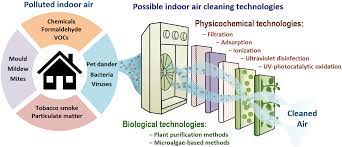A good night’s sleep is essential for our overall well-being, and maintaining a clean sleeping environment can significantly impact sleep quality. In this blog, we will explore the importance of dust cleaning in creating a dust-free bedroom. By implementing effective cleaning methods and reducing dust accumulation, you can create a healthier and more conducive space for restful sleep. Transition words: Additionally, Furthermore
Understanding the Impact of Dust on Sleep Quality
- Allergen Accumulation: Dust contains allergens such as dust mites, pollen, and pet dander, which can trigger allergies and disrupt sleep.
- Respiratory Irritation: Inhaling dust particles can lead to respiratory discomfort, congestion, and coughing, affecting sleep quality.
- Asthma Aggravation: Dust can worsen asthma symptoms, including wheezing and shortness of breath, leading to sleep disturbances. Transition words: Moreover, Furthermore
Benefits of Dust Cleaning for Better Sleep
- Allergen Reduction: Regular dust cleaning minimizes allergens in the bedroom, providing relief for allergy sufferers and promoting uninterrupted sleep.
- Improved Air Quality: Removing dust particles from the environment helps maintain cleaner and healthier air, facilitating easier breathing during sleep.
- Enhanced Relaxation: A clean and dust-free sleeping environment promotes a sense of calm and relaxation, contributing to better sleep quality. Transition words: Additionally, Furthermore
Effective Dust Cleaning Techniques
- Dusting Surfaces: Use a microfiber cloth or electrostatic duster to capture and remove dust from furniture, shelves, and other surfaces.
- Vacuuming: Vacuum mattresses, carpets, and floors regularly with a high-efficiency particulate air (HEPA) filter to effectively trap dust particles.
- Laundering Bedding: Wash bedding, including sheets, pillowcases, and blankets, in hot water to eliminate dust mites and allergens. Transition words: Moreover, Furthermore
Purifying the Bedroom Air
- Air Purifiers: Consider using an air purifier with a HEPA filter to remove airborne dust particles and allergens.
- Proper Ventilation: Ensure good airflow in the bedroom by opening windows or using fans to reduce stagnant air and aid in dust removal.
- Minimizing Clutter: Decluttering the bedroom reduces dust accumulation on surfaces and makes cleaning more efficient. Transition words: Additionally, Furthermore
Maintaining a Dust-Free Sleep Environment
- Regular Cleaning Routine: Establish a consistent cleaning schedule to prevent dust buildup in the bedroom.
- Bedding Maintenance: Wash pillows, pillow protectors, and mattress covers regularly to keep them free from dust and allergens.
- Flooring Choices: Opt for easy-to-clean flooring options, such as hardwood or laminate, to minimize dust retention.
- Pet Management: Keep pets out of the bedroom or regularly groom them to reduce the introduction of pet dander and fur. Transition words: Moreover, Furthermore
Additional Tips for Sleep Quality
- Hypoallergenic Bedding: Consider using hypoallergenic pillows, mattress protectors, and bedding to reduce allergen exposure.
- Regular Dusting of Electronics: Dust electronic devices in the bedroom, such as televisions and computers, to prevent dust particles from circulating in the air.
- Curtains and Blinds: Clean and dust window treatments regularly to prevent dust accumulation and reduce allergens. Transition words: Additionally, Furthermore
Creating a Relaxing Sleep Environment
- Soft Lighting: Opt for dimmable or warm-colored lighting to create a relaxing ambiance conducive to sleep.
- Noise Reduction: Use soundproofing methods or white noise machines to minimize disruptive noises that can interfere with sleep.
- Comfortable Temperature: Maintain a cool and comfortable temperature in the bedroom to promote restful sleep. Transition words: Moreover, Furthermore
Conclusion
By prioritizing regular dust cleaning and creating a dust-free sleep environment, you can significantly improve your sleep quality. Minimizing allergens, enhancing air quality, and fostering a clean and relaxing space will contribute to a more restful and rejuvenating sleep experience. Transition words: In conclusion, Therefore.

